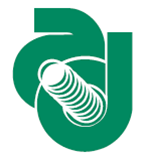Speaker
Philipp Schwegler
(Max-Planck-Institut fuer Physik, Munich)
Description
The planned upgrades of the Large Hadron Collider (LHC) towards higher luminosities
require among other detector improvements also a significantly higher selectivity
of the ATLAS level-1 muon trigger in order to efficiently reject the large low-momentum
muon background without losing interesting signal events. The momentum resolution
of the L1 muon trigger can be sufficiently improved by using the precision muon
tracking detectors, the Monitored Drift Tube (MDT) chambers, in the trigger.
This has the advantage that no new trigger chambers with higher spatial resolution
need to be installed which is hardly possible for the largest part of the muon detector.
A MDT chamber based muon trigger scheme has been developed and validated by simulation.
Its implementation requires the replacement of the existing MDT on-chamber electronics
which will also need higher radiation hardness and bandwidth.
New readout chips in radiation hard technology and new frontend boards are under
development. First test results will be shown.
for the collaboration
ATLAS
Authors
Dr
Hubert Kroha
(Max-Planck-Institut fuer Physik, Munich)
Philipp Schwegler
(Max-Planck-Institut fuer Physik, Munich)
Co-authors
Dr
Oliver Kortner
(Max-Planck-Institut fuer Physik, Munich)
Dr
Robert Richter
(Max-Planck-Institut fuer Physik, Munich)

